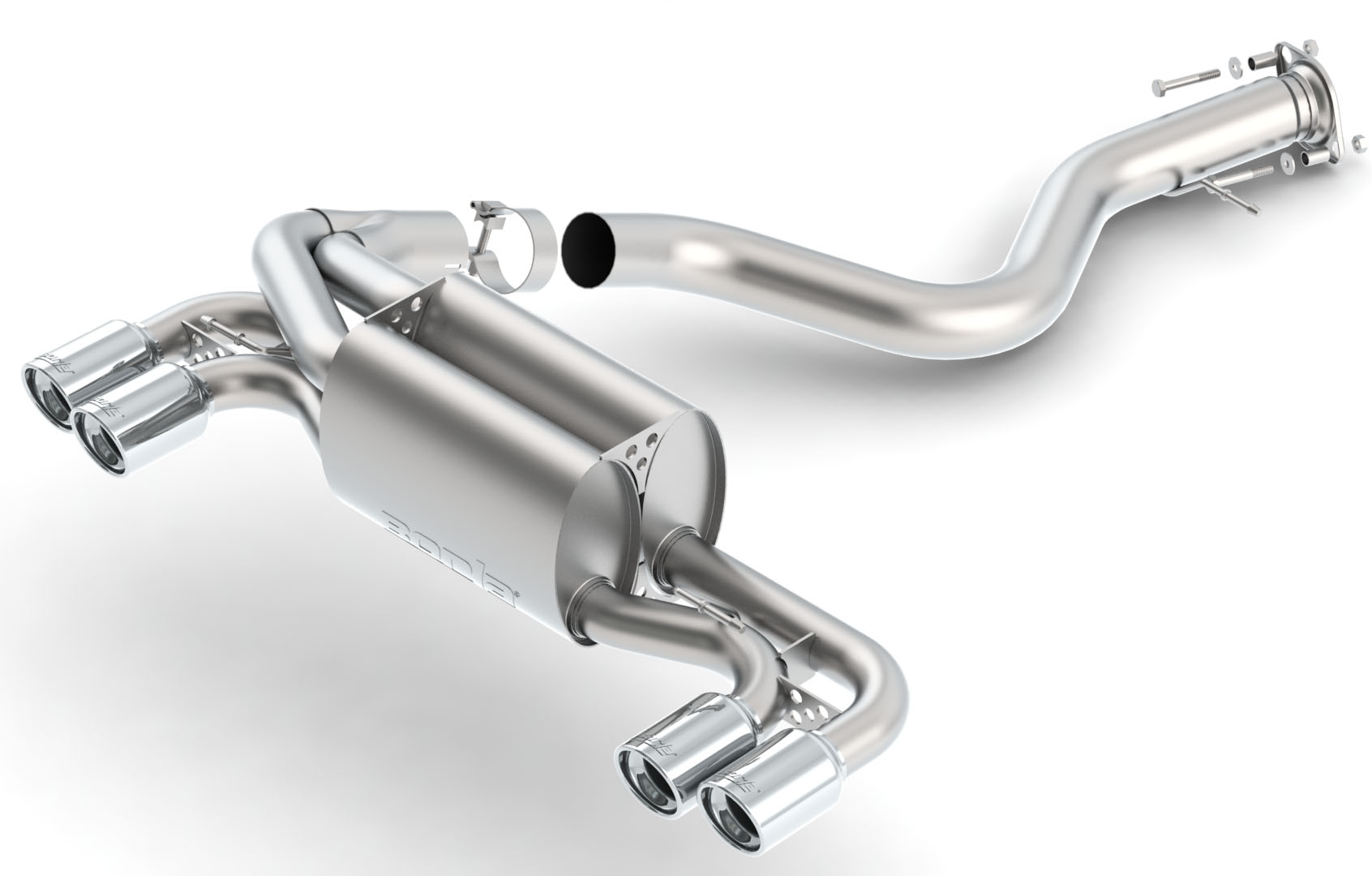Application of Polishing Technology in Metal Components of Automotive Exhaust Systems
Jan 8 ,2024
Application of Polishing Technology in Metal Components of Automotive Exhaust Systems
In the realm of modern automotive manufacturing, the exhaust system is not merely a conduit for engine emissions; it stands as a pivotal component influencing both vehicle performance and aesthetics. To enhance the overall visual appeal and durability of automobiles, polishing technology plays a crucial role in the metal components of exhaust systems. Below is a detailed exploration of the application of polishing technology in the metal components of automotive exhaust systems:

- Enhancing Visual Quality:
– Oxidation Removal: Polishing technology adeptly eliminates oxidation, dirt, and imperfections from the metal surface, presenting exhaust system metal components with a smoother and more refined appearance.
– Uniform Surface: The process creates a uniformly smooth surface, contributing to a sleek and polished look, thereby elevating the visual quality of the exhaust system. - Improving Corrosion Resistance:
– Creating a Protective Layer: Polishing forms a microscopically smooth surface, establishing a protective layer that reduces the probability of corrosion. This layer acts as a barrier against environmental factors such as humidity, salt, and other corrosive elements.
– Chemical Resistance: The polished metal surface exhibits increased resistance to chemical erosion, a vital aspect for exhaust systems exposed to potentially corrosive elements present in exhaust emissions. - Reflecting Light and Design Considerations:
– Reflectivity Enhancement: A polished surface reflects light more effectively, contributing to an impressive visual effect. Designers can strategically utilize polishing to emphasize specific features, enhancing the functional and aesthetic value of the exhaust system.
– Design Flexibility: Polishing technology provides designers with greater flexibility, enabling them to consider the visual impact of metal surfaces in the exhaust system and contribute to the overall aesthetic appeal of the vehicle. - Prolonging Component Lifespan:
– Corrosion Mitigation: By enhancing corrosion resistance, polishing significantly extends the lifespan of exhaust system components. This not only reduces maintenance costs but also enhances the overall reliability of the vehicle.
– Sustainable Performance: The longevity achieved through polishing aligns with the sustainable practices in modern automotive manufacturing, promoting a balance between aesthetics and environmental responsibility. - Environmental Considerations:
– Green Surface Treatment: Unlike some corrosion inhibiting coatings, polishing doesn’t rely on harmful substances. This makes polishing an environmentally friendly and sustainable surface treatment choice, aligning with the green principles of modern automotive manufacturing.
In the realm of automotive exhaust system metal component polishing, the ADV-108 Polishing Machine stands as a cutting-edge tool, enhancing efficiency and precision. Below is an in-depth exploration of the features and benefits of the ADV-108 in the context of polishing automotive exhaust system components:
- Advanced Polishing Technology:
– The ADV-108 employs state-of-the-art polishing technology, ensuring a consistent and high-quality finish on metal surfaces.
- Variable Speed Control:
– Equipped with variable speed control, the ADV-108 allows operators to tailor the polishing process to specific requirements. This flexibility is crucial for achieving optimal results on different types of metal surfaces within automotive exhaust systems.
- Customizable Polishing Settings:
– The machine offers customizable polishing settings, allowing users to adjust parameters such as pressure and polishing intensity. This adaptability ensures that the ADV-108 can cater to the diverse needs of various exhaust system components.
- Precision in Polishing:
– With its precision engineering, the ADV-108 ensures uniform polishing across the metal surface, eliminating imperfections and delivering a smooth, reflective finish.
Detailed Introduction to Polishing Steps and Considerations for Metal Components in Automotive Exhaust Systems:
- Preparatory Steps:
– Surface Cleaning: Before commencing the polishing process, ensure that the metal surface is clean. Cleaning removes dust, dirt, and residues, ensuring that the polishing process is not impeded by impurities.
– Oxidation Removal: Utilize an appropriate cleaner or deoxidizer to eliminate initial oxidation layers from the metal surface, providing a better starting point for the polishing process. - Coarse Grinding Phase:
– Selecting Suitable Abrasives: Choose abrasives with a larger grit size, typically sandpaper or grinding wheels, to eliminate deeper flaws and uneven surfaces.
– Even Application of Pressure: During the grinding process, apply pressure uniformly to ensure the metal surface is ground evenly. Avoid excessive force to prevent scratching the metal. - Intermediate Grinding Phase:
– Transition to Finer Abrasives: Shift to finer abrasives, such as medium-grit sandpaper or intermediate grinding wheels, to further smooth the metal surface and reduce visible scratches.
– Cooling with Water: Employ a water cooling system during the grinding process to moderate the temperature at the grinding site, preventing overheating of the metal. - Final Polishing Stage:
– Selecting Fine Sandpaper or Polishing Machine: Utilize finer abrasives, such as fine-grit sandpaper or a polishing machine, for the final polishing stage. The objective is to achieve a smooth, reflective surface.
– Gradual Reduction in Abrasive Particle Size: Gradually decrease the particle size of the abrasive to enhance the surface’s smoothness during the final polishing phase. - Regular Inspection:
– Observing Surface Quality: Periodically inspect the quality of the metal surface during the polishing process. Ensure that the polishing effect is uniform, and there are no apparent defects.
– Avoiding Over-Polishing: Exercise caution to avoid over-polishing, as excessive polishing may result in a reduction of metal thickness and strength. Choose the polishing frequency and pressure carefully based on the specific requirements. - Cleaning and Protection:
– Removing Residues: Clean the metal surface thoroughly to eliminate any remaining polishing residues.
– Application of Protective Agents: Apply suitable metal protectants, such as wax or lubricating oil, post-polishing to form a protective layer. This safeguards against future oxidation and corrosion.
Through adhering to these steps and considerations, the polishing process for metal components in automotive exhaust systems can be conducted efficiently, ensuring a high-quality finish and enhanced resistance to environmental factors.



